Shade flowers we love them, and it’s good to have a cool and shady setting around your home.
However, shade can present challenges if you love to grow flowers and other types of plants.
Luckily, there are quite a few shade-loving flowering plants which do well even on the north side of your house.
Many produce not only beautiful flowers but also have lovely variegated foliage.
In this article, we present a collection of shade-loving plants to help you brighten up the shady places in your yard. Read on to learn more.
The 40 Best Shade Flowers
Azalea Shrubs
Azaleas are woody shrubs related to rhododendrons. Azalea flowers come in a wide variety of colors, and if you live in a warmer climate, the foliage is evergreen.
In the springtime, Azaleas are covered in clouds of red, purple, pink, and white flowers.
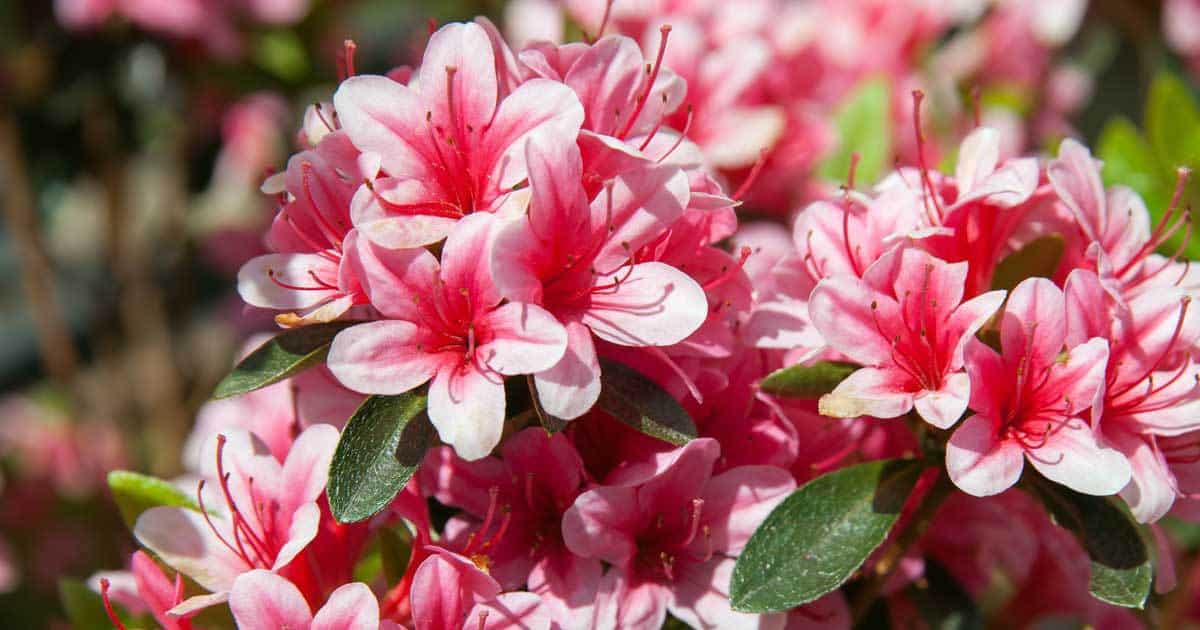 There are some orange and yellow hybrids available, but they are less hardy.
There are some orange and yellow hybrids available, but they are less hardy.
Azaleas do well in dappled shade or light shade, and they prefer well-draining soil kept slightly moist.
You should frequently water during the hot, dry months of summer.
Use a fertilizer formulated for acid-loving plants at the beginning of the growing season.
Azaleas do not do well in areas with extremely cold winters. Some varieties are somewhat cold tolerant.
Be sure to read the plant tag very carefully to determine whether or not the Azalea you choose will thrive in your area.
More Growing Details on Azalea Flowers
Astilbe (False Goat’s Beard)
Astilbe is also known as False Goat’s Beard. This plant is extremely hardy and easy-care.
It is a perennial thriving in a partial shade setting with soft, humus soil.
 Astilbe flowers are red, lavender, white or pink feathery plumes and fern-like foliage.
Astilbe flowers are red, lavender, white or pink feathery plumes and fern-like foliage.
Astilbe thrives in USDA hardiness zones 4 through 9.
Details on Growing Astilbe Fanal
Acanthus Mollis (Bears’ Breeches)
Acanthus mollis is also known as Bears’ Breeches. These enthusiastic plants do very well in partial shade or full shade, and they can thrive in areas with extreme temperatures ranging from very cold winters and very hot summers.
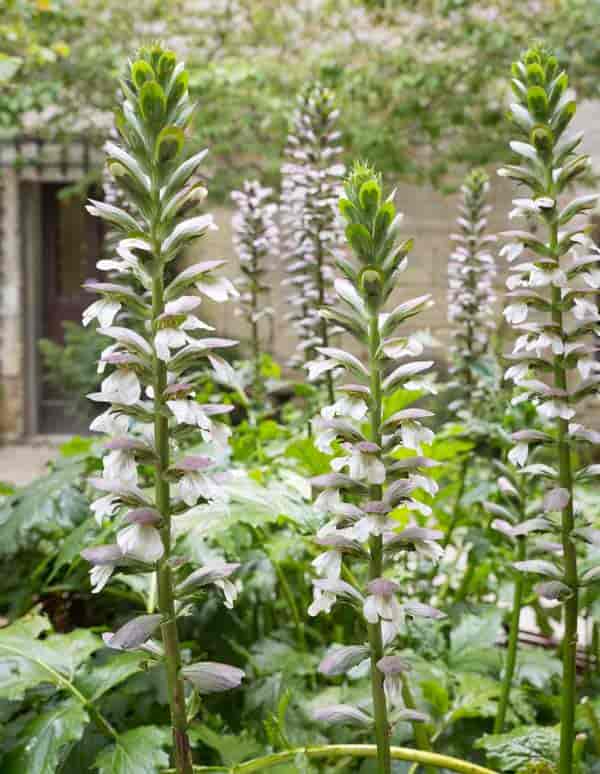 Bears’ Breeches are hardy in USDA hardiness zones 6 to 7. Be careful because these plants are invasive in areas experiencing mild winters.
Bears’ Breeches are hardy in USDA hardiness zones 6 to 7. Be careful because these plants are invasive in areas experiencing mild winters.
Bears’ Breeches are both deer resistant and drought tolerant. The plant has large, deep green lobed leaves and sends up flower spikes nearly 3’ feet tall.
The blossoms are small and look somewhat like snapdragons. They are an attractive shade of creamy white with dark purple hoods.
More on Growing Bear’s Breeches
Lamprocapnos Spectabilis (Bleeding Heart)
Lamprocapnos spectabilis formerly known as Dicentra spectablis or Bleeding Heart is a lovely woodland plant growing to be only about 3’ feet high.
It does well in a partial shade setting with moist, well-draining soil.
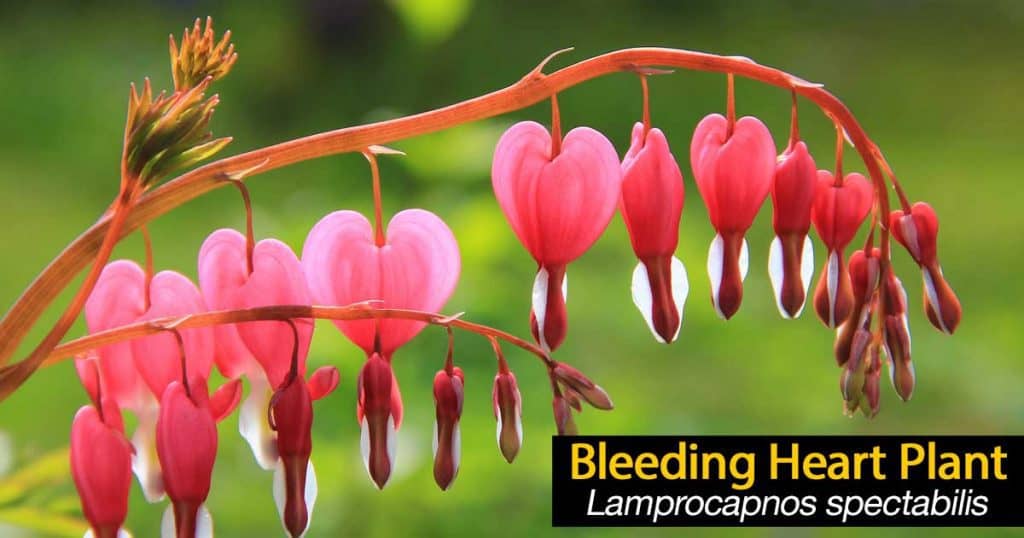 Bleeding heart is winter hardy in USDA hardiness zones 2 or 7.
Bleeding heart is winter hardy in USDA hardiness zones 2 or 7.
This perennial plant produces lovely pink heart-shaped blossoms on arching stems.
The foliage is a pretty shade of green throughout the summer months and then provides some autumn color in the fall when it turns yellow.
Details on Bleeding Heart Plant Care
Yellow Corydalis
Yellow corydalis is a member of the Bleeding Heart family.
The Greek word, corydalis, means lark’s head, and it refers to the flowers which look like a lark’s head.
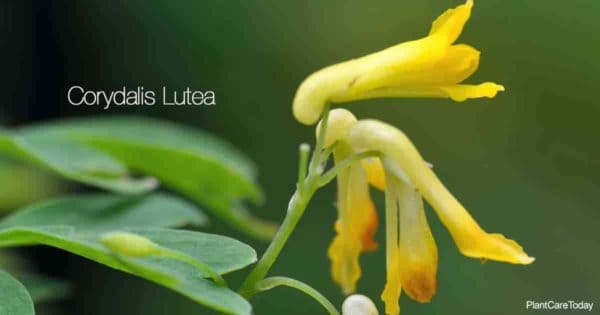 The plant is also known as yellow Larkspur, Yellow Fumitory, and Hollowort.
The plant is also known as yellow Larkspur, Yellow Fumitory, and Hollowort.
The plant has a mounding growth habit and grows well in shaded settings in USDA hardiness zones 4 through 8.
More on Growing Yellow Corydalis
Myosotis Scorpioides (Forget-Me-Not)
Myosotis scorpioides is also called Forget-Me-Not. This self-seeding annual has pretty, five-petaled blue flowers early in the springtime.
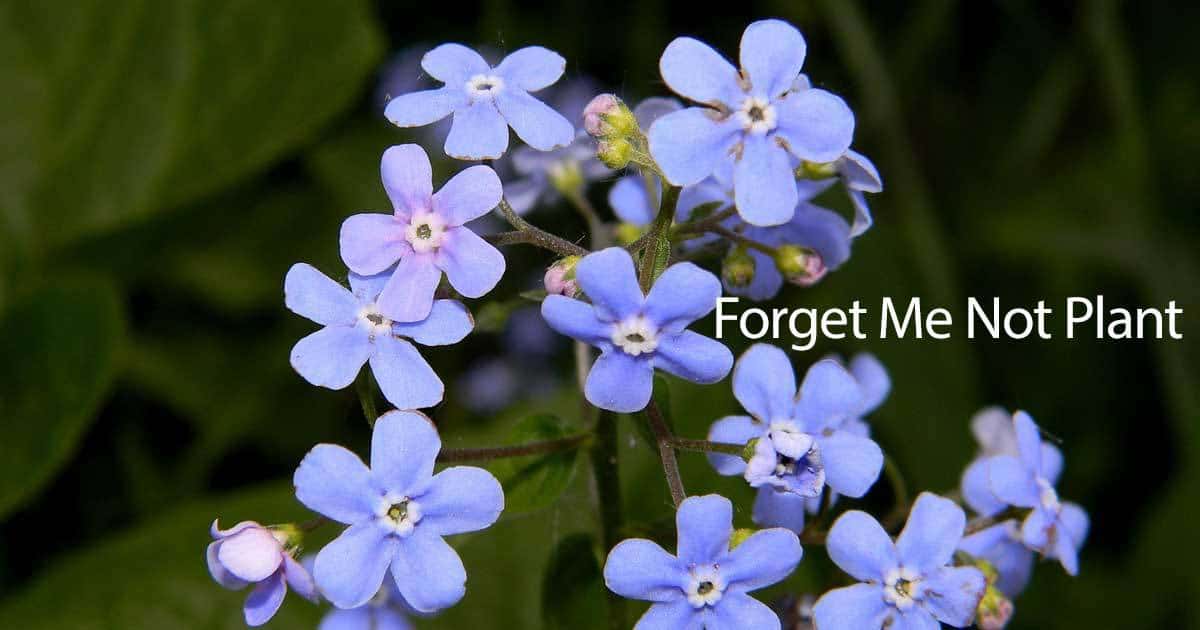 Leaves are heart-shaped and may sometimes be variegated. It does well in partial shade or full shade.
Leaves are heart-shaped and may sometimes be variegated. It does well in partial shade or full shade.
The plants spread slowly and do not need to be divided often. Over time, Forget-Me-Not will grow in large thick clumps in a naturalized setting.
Care Details on Forget Me Not Flowers
Brunnera Macrophylla or Siberian Bugloss (Forget-Me-Not)
Brunnera macrophylla or Siberian Bugloss is similar in appearance to Myosotis scorpioides and is also commonly called Forget-Me-Not.
 This plant is a rhizomatous, herbaceous perennial, which may occasionally sport variegated foliage, along with the pretty blue blossoms.
This plant is a rhizomatous, herbaceous perennial, which may occasionally sport variegated foliage, along with the pretty blue blossoms.
Brunnera Macrophylla Care Details
Heuchera (Coral Bells)
Heuchera is also known as Coral Bells.
This drought and heat tolerant perennial are extremely easy to care for and is quite attractive.
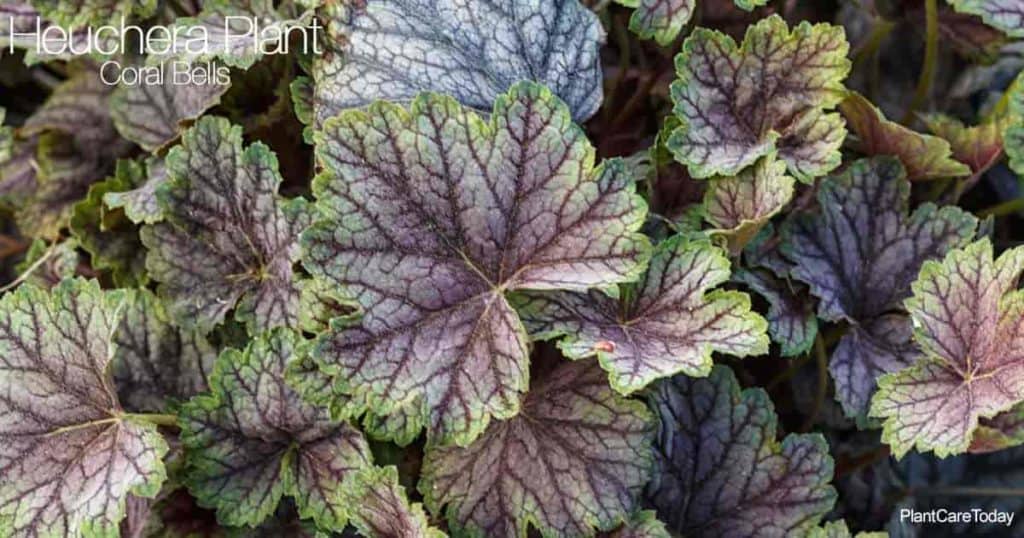 Foliage grows to be 6” – 18” inches tall, and the leaves look like those of geraniums.
Foliage grows to be 6” – 18” inches tall, and the leaves look like those of geraniums.
The blossoms grow on spikes.
Individual flowers are small and bell-like and come in shades of white, pink, and red.
Blooms appear in June and should be deadheaded to encourage more blossoms.
Coral Bells do well in full sun, but also do well in partial shade.
They like moist, well-drained alkaline soil and are winter hardy in USDA hardiness zones 3 through 9.
Heuchera Plant Care Details
Digitalis Purpurea (Foxglove)
Digitalis purpurea is also known as Foxglove. This tall, attractive plant produces pretty, tubular flowers on spikes standing as high as 5’ feet.
Foxglove does well in dry, partial shade.
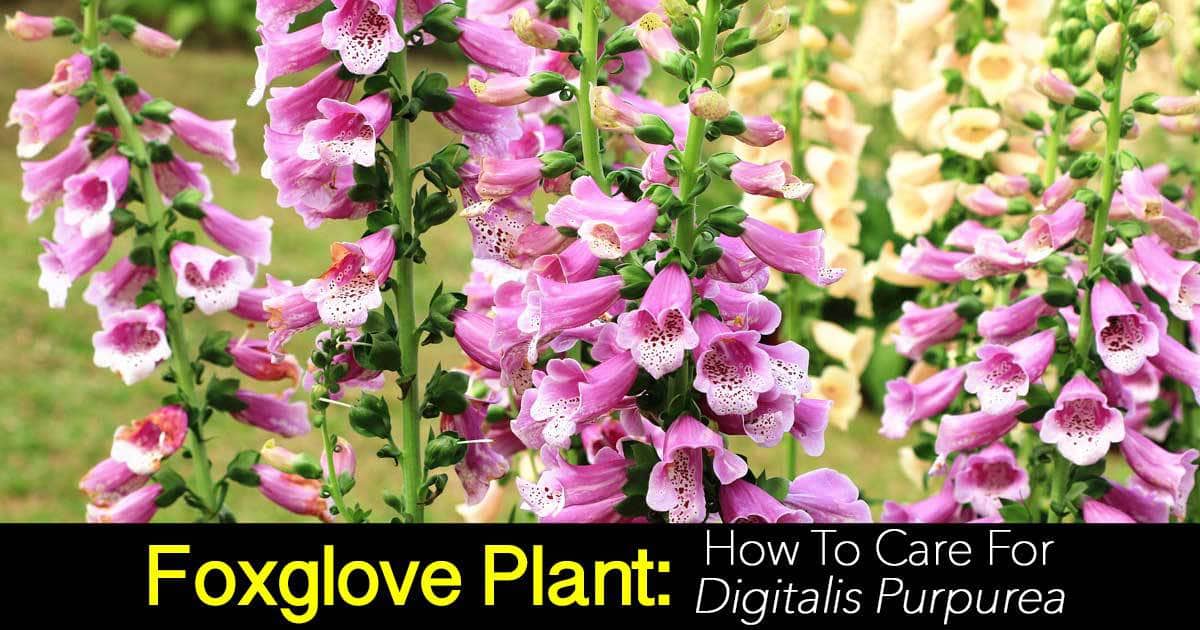 It is a biennial plant growing low in the first year and then sends up flower spikes in the second year.
It is a biennial plant growing low in the first year and then sends up flower spikes in the second year.
Under ideal conditions, the plant will reseed itself so expect to have Foxgloves annually.
These plants prefer well-draining, acidic soil amended with hummus.
Foxglove is an excellent addition to your hummingbird and butterfly garden, but the plants are poisonous so take care to keep them away from kids and pets.
Foxglove is winter hardy in USDA hardiness zones 3 through 9.
More on Growing the Digitalis Plant
Hellebore (Lenten Rose)
Hellebore is also known as Lenten Rose. This pretty perennial blooms late in the wintertime or very early in the springtime.
The plant does well in partial shade or even full shade and will grow happily for several years under ideal conditions.
It is an excellent addition to a woodland garden and is winter hardy in USDA hardiness zones 5 through 9.
- Details on Helleborus Orientalis Plant Care
- The other Helleborus – Christmas Rose (Helleborus niger)
Hosta
Hosta is a pretty perennial plant standing about 2’ feet tall.
Its real drawing card is its large, glossy heart-shaped leaves which may be either solid green, bluish-green or variegated.
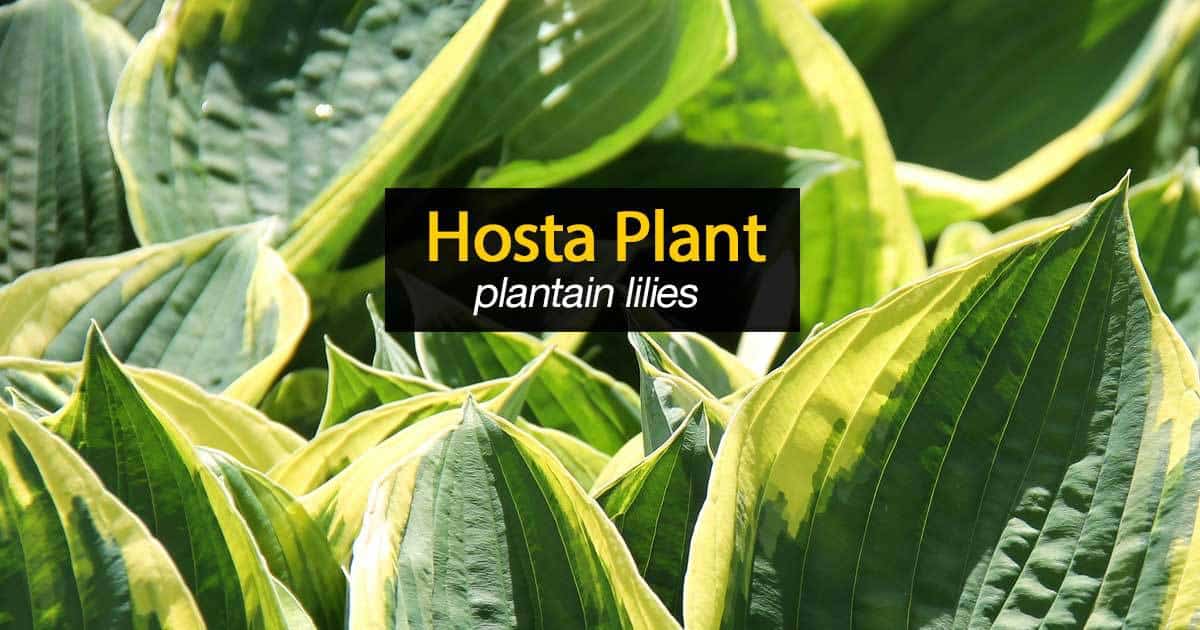 In the summertime, hosta sends up flower spikes sporting very sweet-smelling, narrowly tubular flowers.
In the summertime, hosta sends up flower spikes sporting very sweet-smelling, narrowly tubular flowers.
Hosta is an almost no-care plant spreading enthusiastically in light shade to full shade settings.
Water deeply during the hot summer months, and take care to keep leaves around the base trimmed away to prevent slug infestation.
Hosta is winter hardy in USDA hardiness zones 3 through 9.
More Details on Hosta Plant Care
Hyacinthoides Hispanica (Spanish Bluebell or Wood Hyacinth)
Hyacinthoides hispanica is also known as Spanish Bluebells or Wood Hyacinth.
This plant does very well in dappled shade under trees.
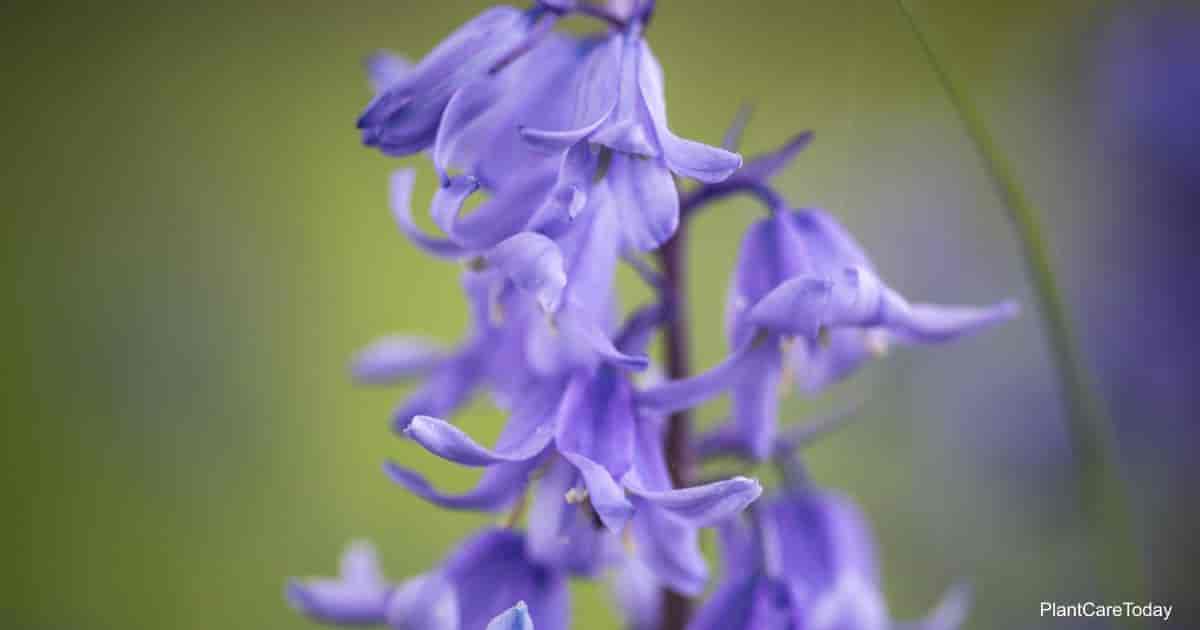 It also thrive in light shade or partial shade or even full shade.
It also thrive in light shade or partial shade or even full shade.
Spanish Bluebell flowers are small and bell-shaped.
They come in shades of white, pink, blue, or violet.
These deer-resistant plants are also poisonous, so you must handle them with care.
Contact with the sap can cause skin irritation.
The plant hails from North Africa and southwestern Europe.
It is winter hardy in USDA hardiness zones 3 through 9.
In the northwestern United States, Wood Hyacinth is sometimes invasive.
Details on Spanish Bellbells Care aka (Hyacinthoides hispanica)
Impatiens
Impatiens is a perennial plant in warm climates and is often used as an annual in cold climates.
The plant does well in light shade or even in full shade. It prefers well-draining, moist soil.
 Impatiens blossoms come in a wide variety of colors including:
Impatiens blossoms come in a wide variety of colors including:
- Orange
- Bicolor
- Violet
- White
- Pink
- Rose
You do not need to deadhead the flowers to encourage new blooms, but you should pinch back the stems early in the growing season to encourage bushier growth.
Impatiens are popular throughout the United States.
Details on Impatiens New Guinea
Convallaria Majalis (Lily of the Valley)
Convallaria majalis is also known as Lily of the Valley. This plant is very easy to grow.
It is a spreading perennial doing well in partial or even full shade.
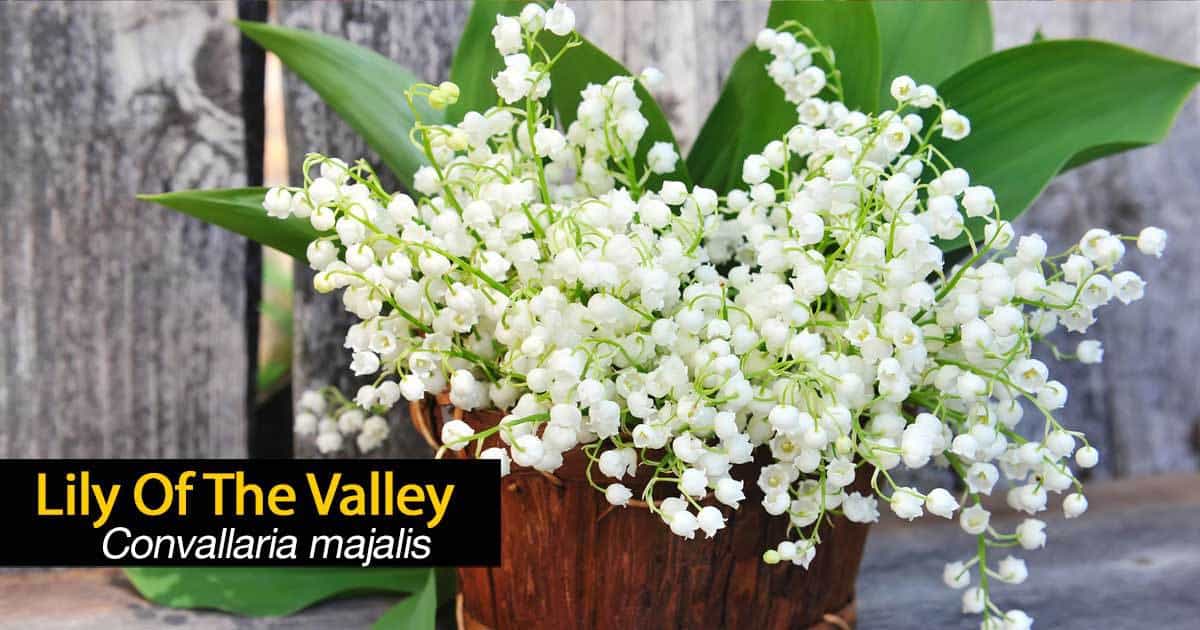 This low growing plant grows to be only about 8” inches high and has attractive sword-shaped leaves.
This low growing plant grows to be only about 8” inches high and has attractive sword-shaped leaves.
The blossoms are very small and white and look like bells. They appear early in the springtime, usually in April or May.
You may also hear Lily of the Valley referred to as Mary’s Tears or Little May Bells.
The blossoms are extremely sweet-smelling, and the plant is quite poisonous.
Lily of the Valley is winter hardy in USDA hardiness zones 2 through 7.
Care Details on Lily of the Valley Plant
Trillium Grandiflorum (White Trillium or Wood Lily)
Trillium grandiflorum is also known as White Trillium or Wood Lily.
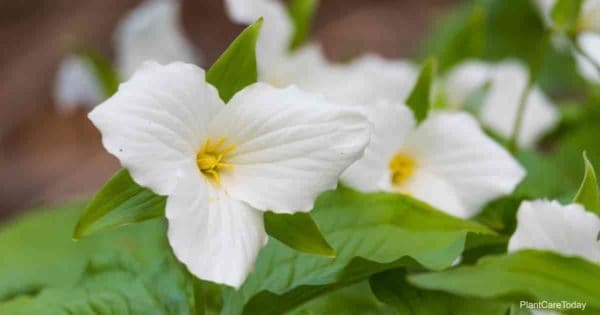 This plant grows wild throughout the eastern United States.
This plant grows wild throughout the eastern United States.
It does well in humus-rich, well-drained moist soil in light to partial shade setting.
Wood Lily grows to be only about a foot high. Its large, oval leaves surround a broad (3” inches) flower transitioning from pure white to pink to red.
White Trillium is winter hardy in USDA hardiness zones 2 through 8.
More On: Growing Trillium grandiflorum
Asters
Asters are late summer bloomers which do well in a wide variety of settings ranging from partial shade to full sun.
These perennial wildflowers are winter hardy in USDA hardiness zones 3 through 9.
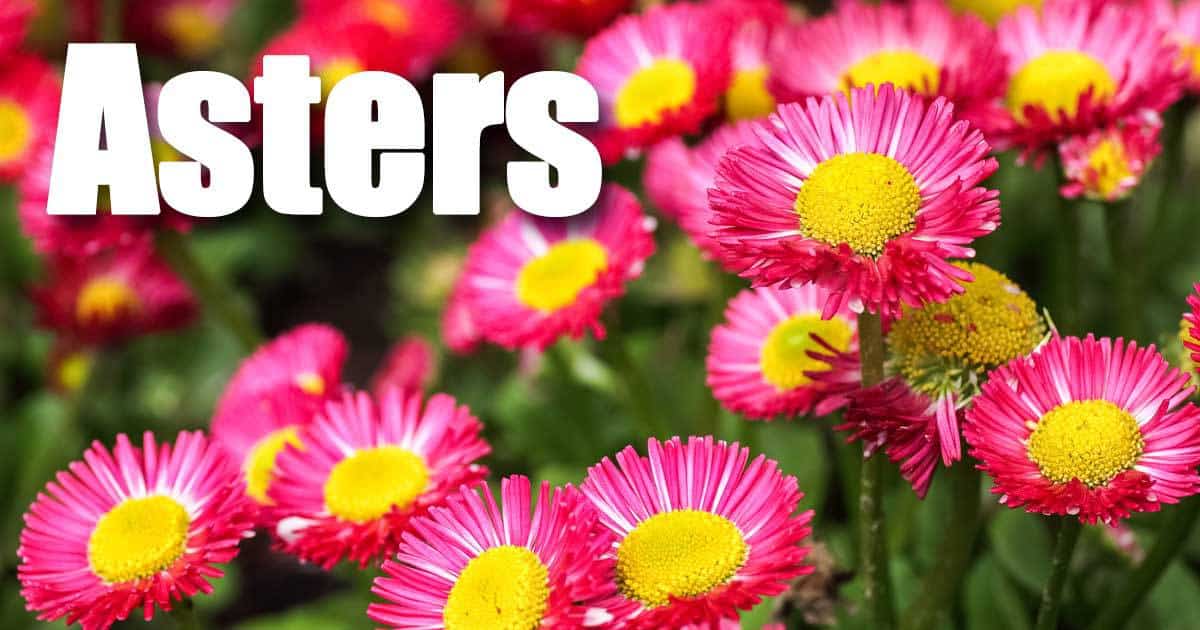 They produce clouds of pretty, daisy-like flowers in shades of white, purple, pink, and blue.
They produce clouds of pretty, daisy-like flowers in shades of white, purple, pink, and blue.
The showy plant stands about 2’ – 3’ feet high.
They will spring up naturally in almost any sort of soil, but cannot tolerate poor drainage.
Details on Growing the Hardy Aster Plant
Bellflower
Bellflower comes in several different varieties blooming at different times throughout the summer.
Winter hardiness, height and flower colors vary from one species to another.
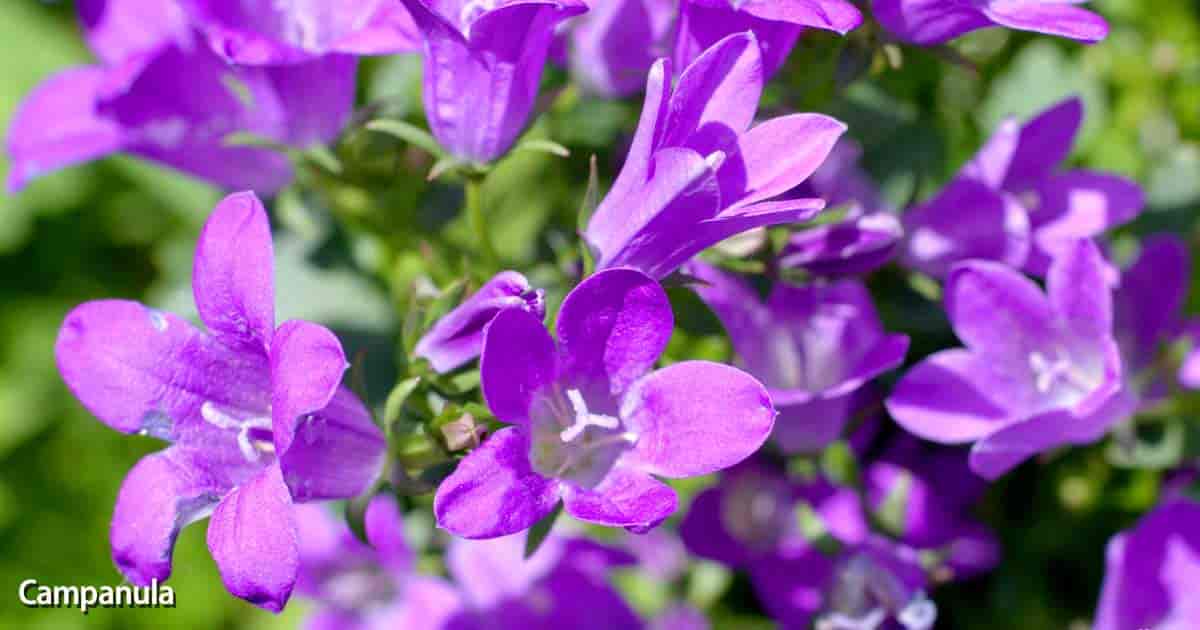 Some stand to be a foot-high, while others stand to be 42” inches high.
Some stand to be a foot-high, while others stand to be 42” inches high.
The flowers are bell-shaped and attractive and come in shades of white, purple, and blue.
Bellflowers are winter hardy in USDA hardiness zones 4 through 8.
If you protect them during wintertime, they’ll grow in USDA hardiness zone 3.
Details on Bellflower Plant Growing and Care
Columbine
Columbine does well in partial shade to full sun.
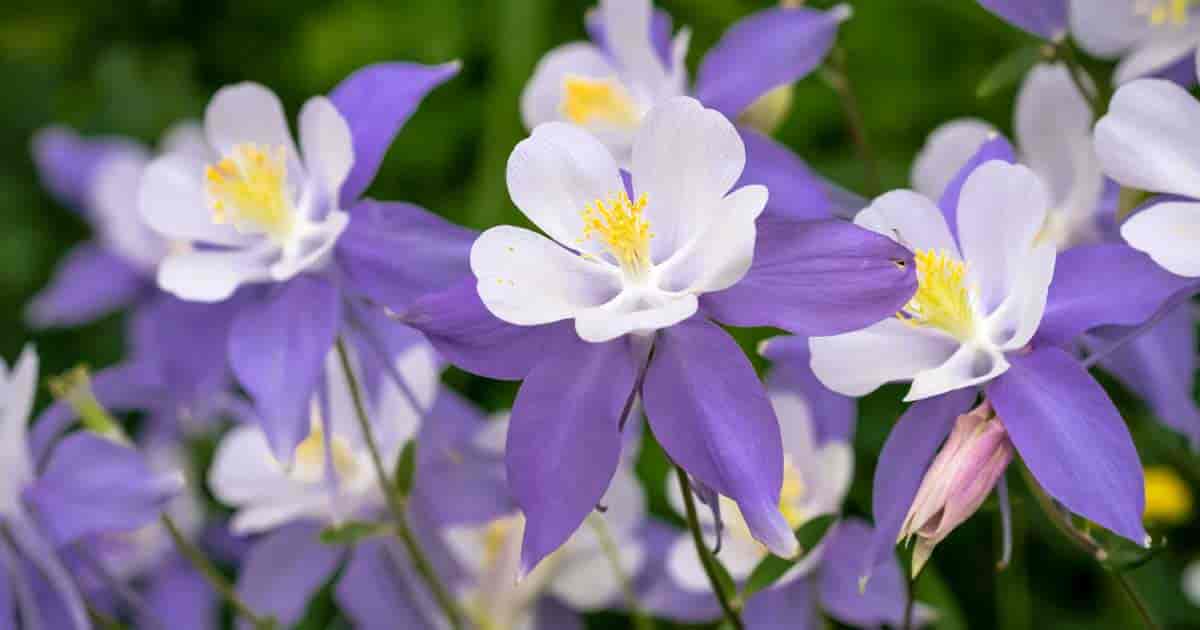 The complex flowers are ruffled and spurred and came in a wide variety of colors, including:
The complex flowers are ruffled and spurred and came in a wide variety of colors, including:
- Multicolored
- Yellow
- Purple
- White
- Blue
- Red
Height varies depending upon the variety you choose.
Columbine may stand anywhere from 1’ foot high to 3’ feet high.
Columbine is winter hardy in USDA hardiness zones 3 through 9.
Care Details on The Columbine Flower
Delphinium
Delphinium is a somewhat picky plant needing to be fertilized rather frequently.
Additionally, you must deadhead the flowers to encourage repeat blooms.
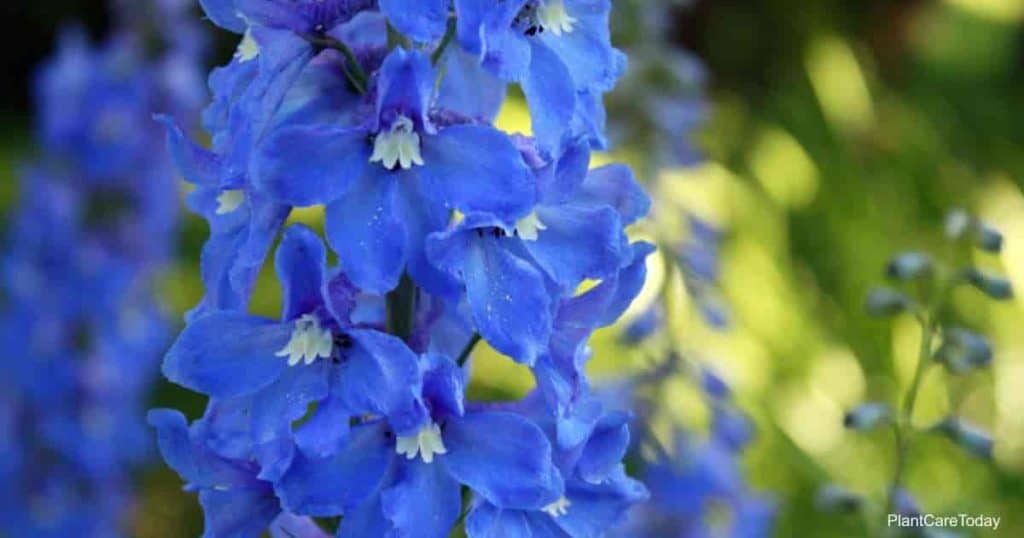 Even so, these shady place perennials are worth the effort it takes to grow them.
Even so, these shady place perennials are worth the effort it takes to grow them.
They stand tall and proud at a height ranging from 2’ – 6’ feet.
The pretty blossoms grow in shades ranging from white to pink to blue.
Delphiniums are winter hardy in USDA hardiness zones 3 to 7.
They grow well in partial to full shade.
Details on Caring for Delphinium Plants
Lamium (Spotted Deadnettle or Colorful Carpet)
Lamium is also known as Spotted Deadnettle or Colorful Carpet.
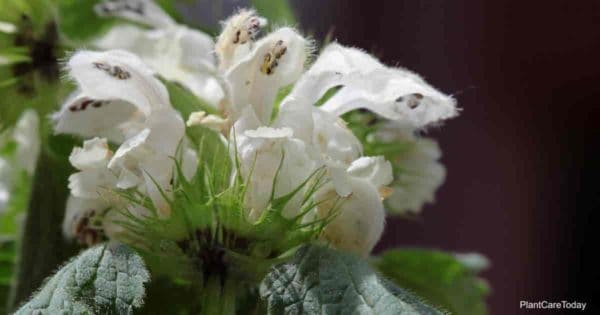 There are approximately fifty species of this member of the mint family.
There are approximately fifty species of this member of the mint family.
This is a low growing groundcover with pretty, silvery foliage and early summer blooms in shades of white, pink, purple and red.
This shady place plant spreads enthusiastically but is not invasive.
More on the Dead Nettle Lamium
Tiarella Cordifolia (Foam Flower)
Tiarella cordifolia is also known as Foam Flower.
This plant has bottle brush shaped flowers on tall stalks in shades of white to pale pink.
 Some new varieties have attractive burgundy or red veins in the green leaves.
Some new varieties have attractive burgundy or red veins in the green leaves.
This herbaceous perennial member of the Saxifragaceae family does well in partial to full shade.
Learn more on Caring For Foam Flowers – Tiarella Cordifolia
Pulmonaria (Lungwort)
Pulmonaria is also known as Lung Wort.
There are many different species of this herbaceous perennial.
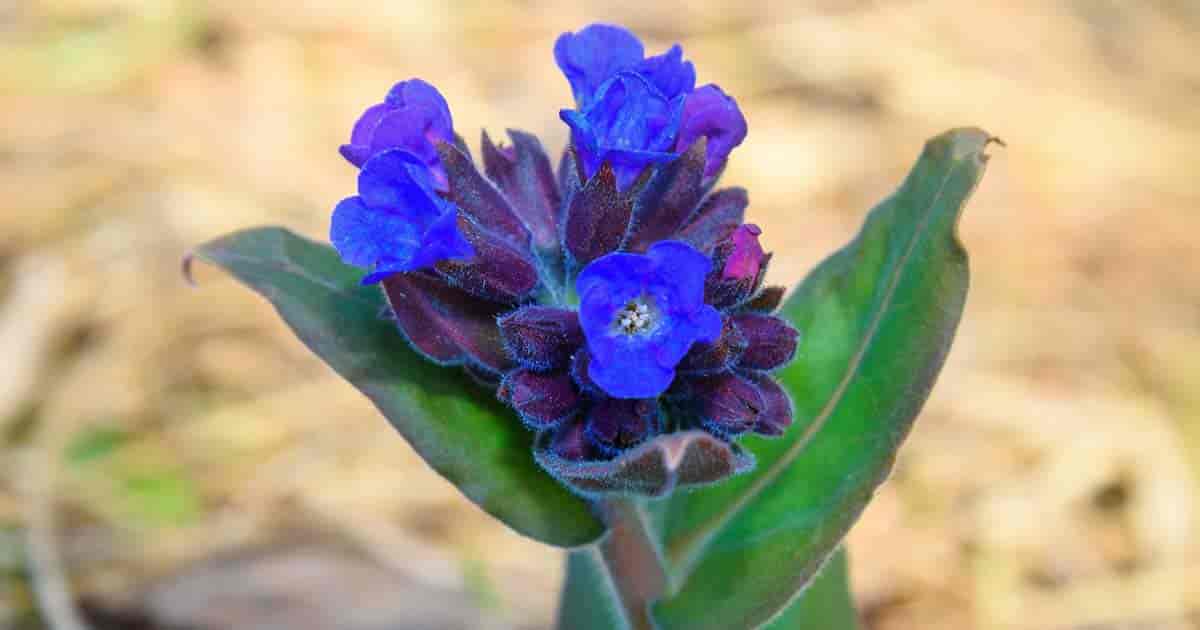 This plant has pretty green leaves with silvery markings.
This plant has pretty green leaves with silvery markings.
Lung Wort blooms in the springtime displaying pretty white, blue, and pink flowers on one plant.
More on Growing on the Lungwort Plant
Primula (Primrose)
Primula is also known as Primrose.
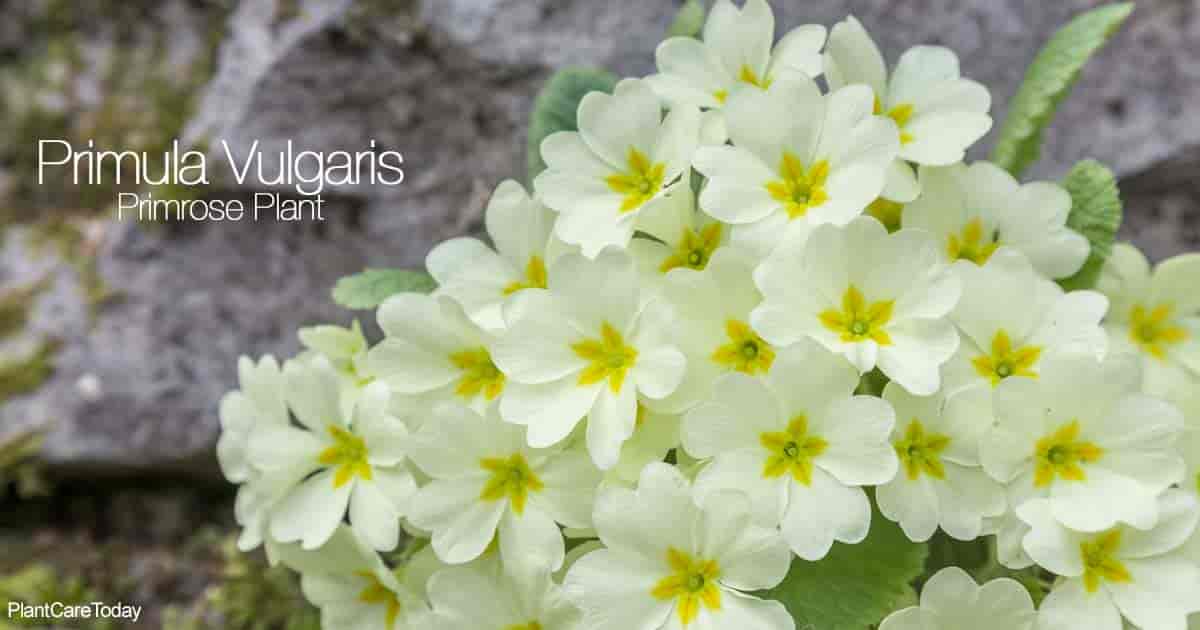 There are over four hundred different species of Primrose, and all of them do quite well in moist soil in shady places.
There are over four hundred different species of Primrose, and all of them do quite well in moist soil in shady places.
Color choice in primroses is limitless, and you are sure to find a size suiting your setting since the different species range from 3” inches high to 4’ feet tall.
Details on Primrose Care
Bletilla Striata
Bletilla striata are also known as hardy ground orchids.
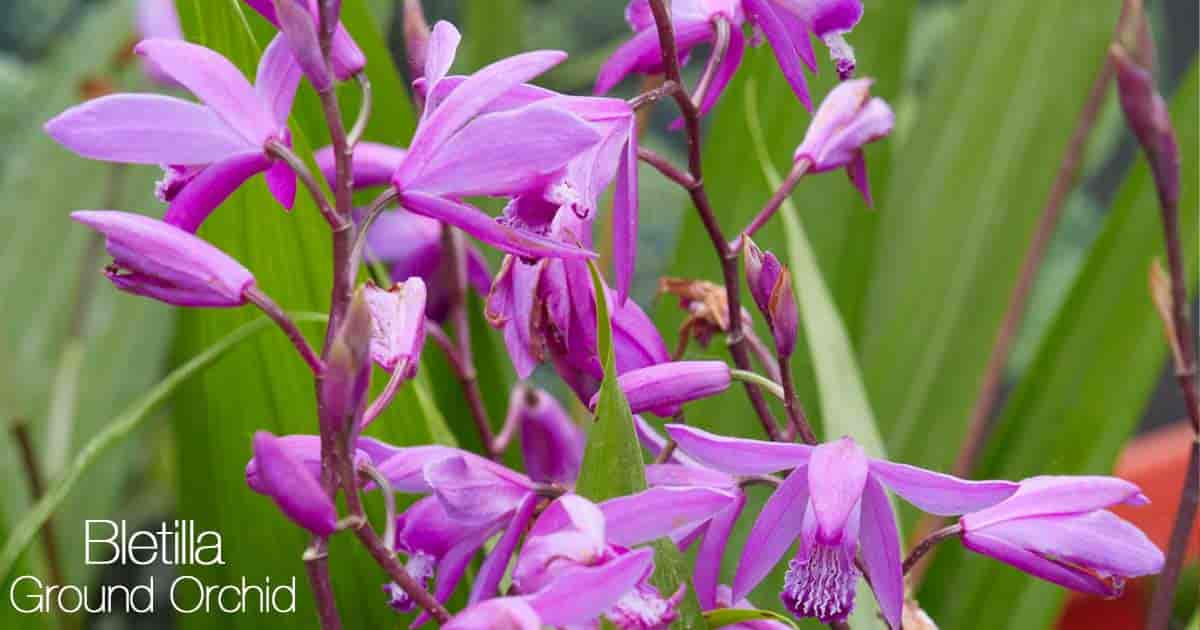 They are long-blooming presenting pretty white, pink, or yellow blossoms lasting as long as ten weeks.
They are long-blooming presenting pretty white, pink, or yellow blossoms lasting as long as ten weeks.
They do well in partial sun/partial shade setting with well-draining soil.
There are several different species of these attractive orchids, and they do well in tropical and semi-tropical settings and are winter hardy in USDA hardiness zones 5 through 9.
Details on Growing the Ground Orchid Bletilla Striata
Monarda Clinopodia (Bee Balm or White Bergamot)
Monarda clinopodia is also known as the Bee Balm plant or White Bergamot.
It is a perennial wildflower which makes an excellent addition to your hummingbird, butterfly in the bee garden.
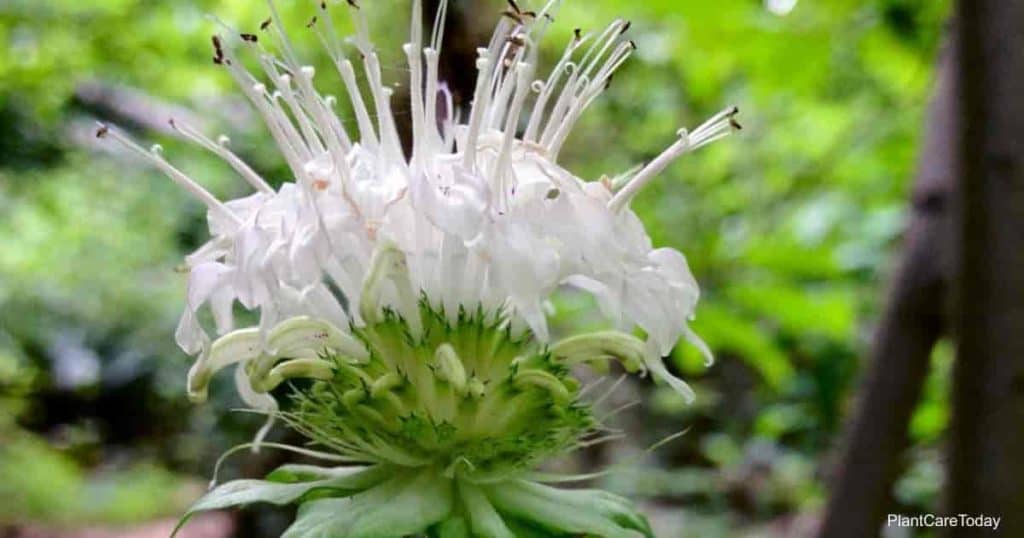 Image by Fritzflohrreynolds [CC BY-SA 3.0], via Wikimedia CommonsThe plant thrives in full sunshine but may tolerate some partial shade.
Image by Fritzflohrreynolds [CC BY-SA 3.0], via Wikimedia CommonsThe plant thrives in full sunshine but may tolerate some partial shade.
This tall, bushy plant produces pom-pom like flowers in shades of red, purple, pink, and lavender.
Plants may grow to be 3’ – 4’ feet tall and wide.
Monarda prefers neutral to slightly acidic soil loamy soil.
It is winter hardy in USDA hardiness zones 3 through 9.
Growing Monarda Clinopodia (White Bergamot)
Epimedium (Fairy Wings, Barrenwort or Bishop‘s Hat)
Epimedium is also known as Fairy Wings, Barrenwort or Bishop‘s Hat.
It is a rhizomatous perennial wildflower which is easy to grow as a groundcover in dry shade.
The plant has heart-shaped or oval leaves with wiry stems.
The slightly furry leaves may have a bronze or pinkish tinge in the autumn.
Delicate flowers appear in sprays of lavender, orange, pink, yellow or white in the springtime.
Some say the blossoms resemble those of ground orchids.
Details on Caring for and Growing Barrenwort plants – Epimedium
Hydrangeas
Hydrangeas come in 7 basic varieties, all of which do well in fairly shady settings.
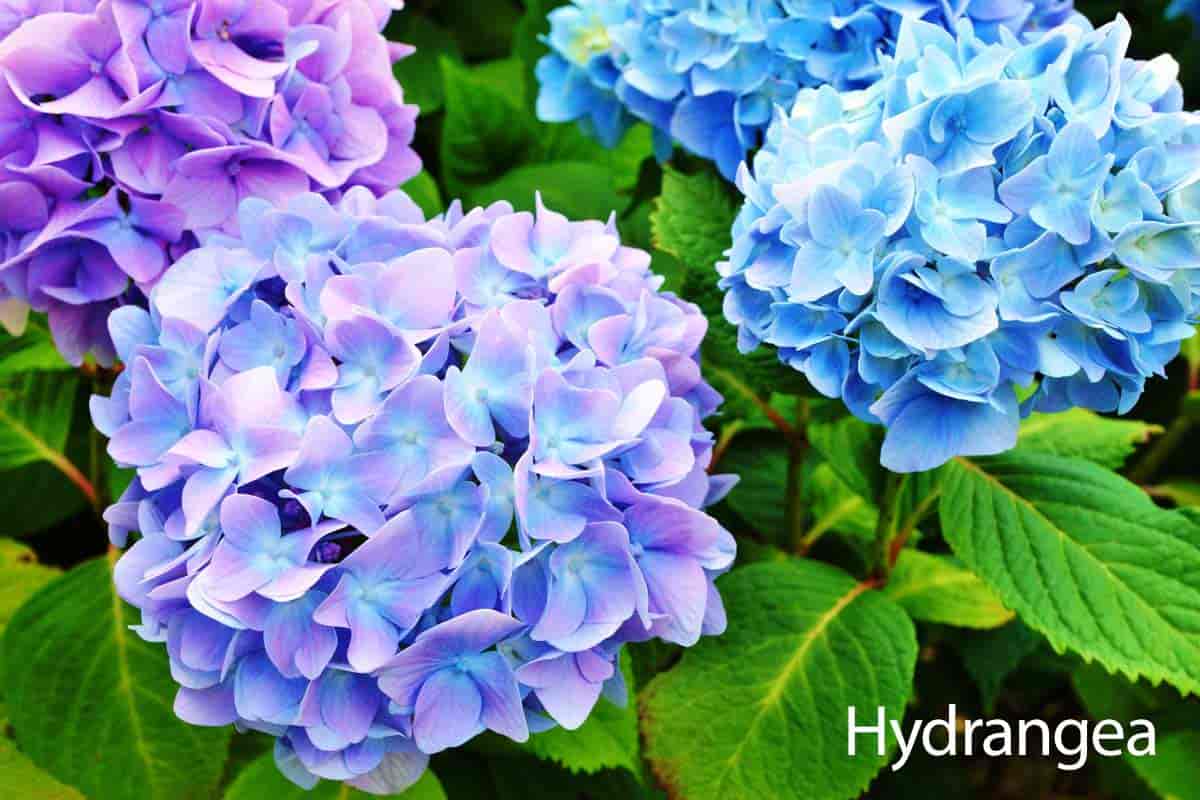 They are:
They are:
- Mophead hydrangeas have large leaves and pretty clusters of blue flowers.
- Lacecap hydrangeas have clusters of tiny buds surrounded by an edging of showy blooms.
- Mountain hydrangeas are a cold-hardy, bigleaf variety with smaller flowers.
- Panicle hydrangeas have longer, darker leaves and flowers growing in cone-shaped clusters.
- Smooth or Wild hydrangeas are US natives winter hardy in USDA hardiness zones 4 through 7.
- Oakleaf hydrangeas have leaves resembling those of oak trees, true to their name.
- Climbing hydrangeas hail from Japan and display and interesting climbing growth habit.
Details on Hydrangea Care
Polemonium Reptans (Jacob’s Ladder)
Polemonium reptans is also known as Jacob’s Ladder. This plant grows to be a maximum of 18” high.
Pretty violet, bell-shaped flowers grow as branched clusters.
Leaves have many small divisions, giving them a ladder-like appearance.
The plant is winter hardy in USDA hardiness zones 4 through 8.
Stachys Byzantina (Lamb’s Ear)
Stachys byzantina is also known as Lamb’s Ear because of its fuzzy, bluish-green foliage.
 This herbaceous perennial produces pale purple flowers during the summer months.
This herbaceous perennial produces pale purple flowers during the summer months.
It is winter hardy in USDA hardiness zones. 4 through 7.
Growing Lambs Ear Plants
Louisiana Iris
Louisiana Iris is a wildflower growing naturally in many parts of the southern United States, especially Louisiana, Mississippi, Arkansas, and Florida.
 It is winter hardy through USDA hardiness zone 6 – 10.
It is winter hardy through USDA hardiness zone 6 – 10.
The pretty, classic flowers come in a wide variety of colors including:
- Multi-colored
- White
- Purple
- Yellow
- Rust
- Blue
- Pink
Details on Growing Louisiana Iris
Aconitum Napellus (Monkshood or Wolfsbane)
Aconitum napellus is also called Monkshood or Wolfsbane.
This herbaceous wildflower has dark green, palmate leaves and showy bluish/purple blooms.
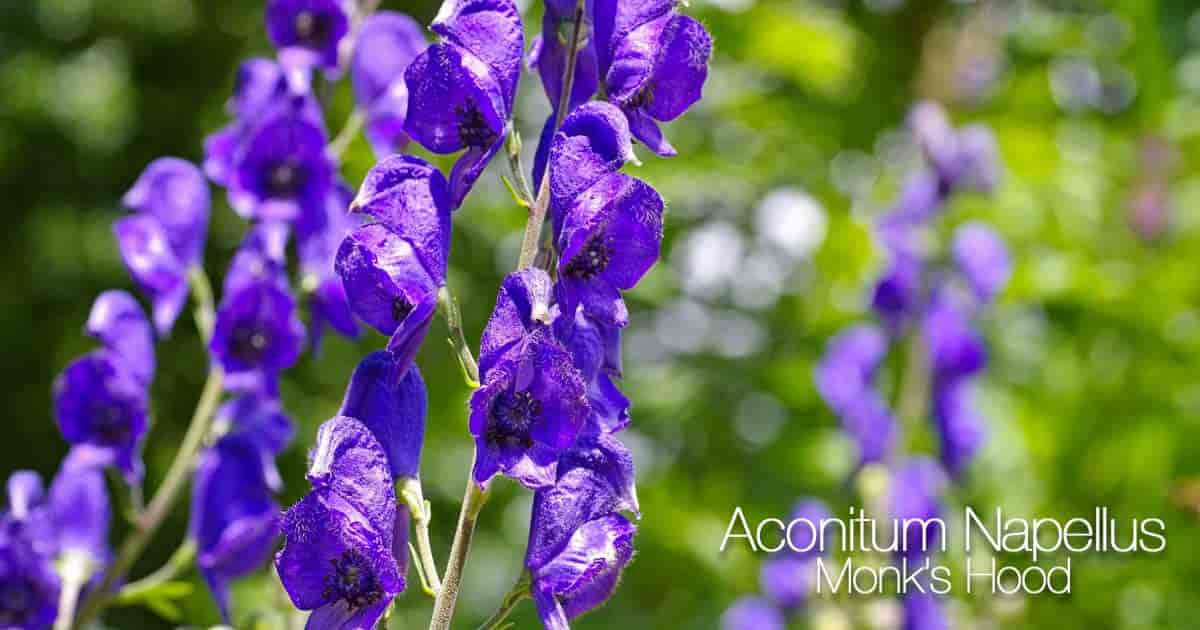 This very pretty plant is also very poisonous.
This very pretty plant is also very poisonous.
Its sap contains a heart poison and nerve toxin used in ancient times to poison arrows and spears.
Growing it is not advisable, but if you must, keep it well out of the reach of children and pets and use extreme caution when handling it yourself.
It is relatively difficult to grow as the roots are quite fragile.
A setting with average, moist soil and morning sunlight is the best choice.
Care Details on the Monkshood Plant
Iris Sibirica (Siberian Iris)
Iris sibirica or Siberian Iris is an elegant, shade-tolerant iris which does well when supplied with plenty of nitrogen.
 The plant is available in many varieties, which all sport showy, frilly blooms in colors including many shades of:
The plant is available in many varieties, which all sport showy, frilly blooms in colors including many shades of:
- Magenta
- Yellow
- Purple
- White
- Pink
- Blue
These extremely cold hardy irises are successful in USDA hardiness zones 2-5.
Siberian Iris Growing and Care
Tricyrtis SPP. (Toad Lily)
Tricyrtis spp. is also known as Toad Lily.
These pretty plants hail from many parts of Asia, where they are found growing wild in woodland settings.
 They are easy to care for and produce small, dandelion-like flowers in shades of purple, orange, and white during the late summer and early autumn.
They are easy to care for and produce small, dandelion-like flowers in shades of purple, orange, and white during the late summer and early autumn.
Details on Growing the Toad Lily Tricyrtis
Vinca (Periwinkle)
Vinca is also known as Periwinkle.
It is an enthusiastic groundcover plant (hailing from Asia) well known to gardeners in the southern United States.
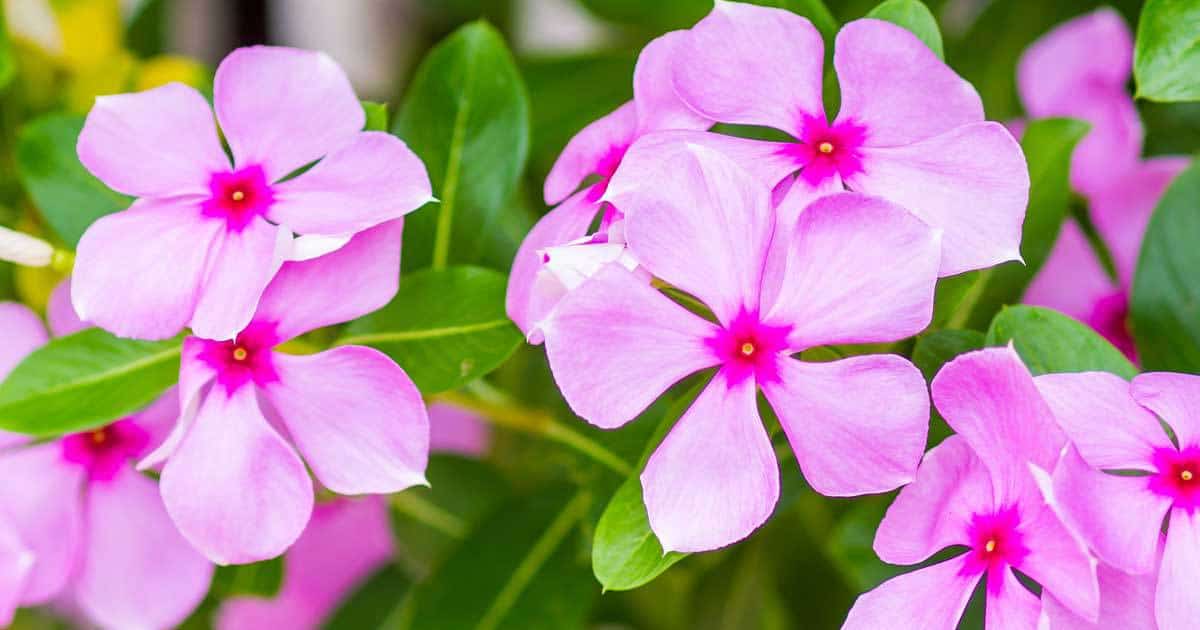 It will quickly and easily fill in the space below trees in a warm climate garden.
It will quickly and easily fill in the space below trees in a warm climate garden.
Leaves are teardrop-shaped and may be solid green or variegated.
Blossoms are pale purple and cover the plant generously throughout the spring and summer.
Growing the Periwinkle Flower
Viola (Violets)
Viola or Violets are members of the Violaceae family.
Many different types are ranging from wild woodland violets to pansies, violas, and Johnny-Jump-Ups.
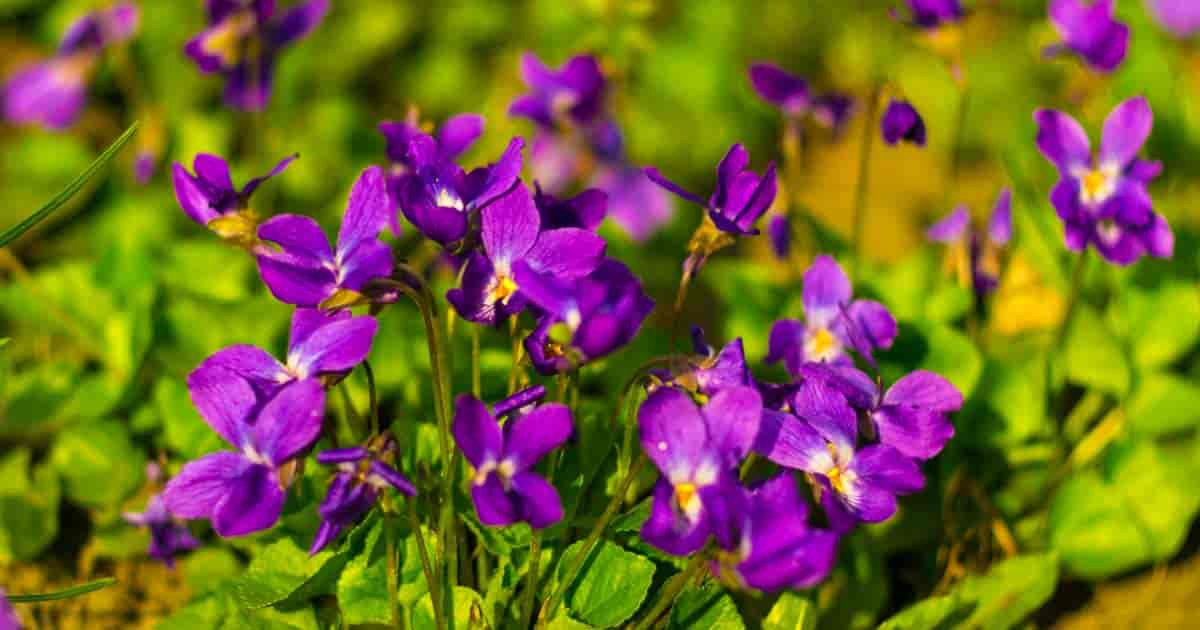 These annual plants prefer temperate climates, but even in very cold climates they may self-seed and return year after year.
These annual plants prefer temperate climates, but even in very cold climates they may self-seed and return year after year.
Violaceae leaves are typically heart-shaped.
Wild violets are a tiny and naturally deep purple.
Cultivated members of the family produce blooms in a wide variety of sizes and colors such as:
- Bi-colored
- Yellow
- White
- Cream
- Blue
These plants do well in dappled sunlight setting under trees.
More on Viola Sweet Violet
Mertensia Virginica (Virginia Bluebell)
Mertensia virginica is also known as Virginia Bluebell.
This herbaceous perennial is a North American native growing well in partial to full shade.
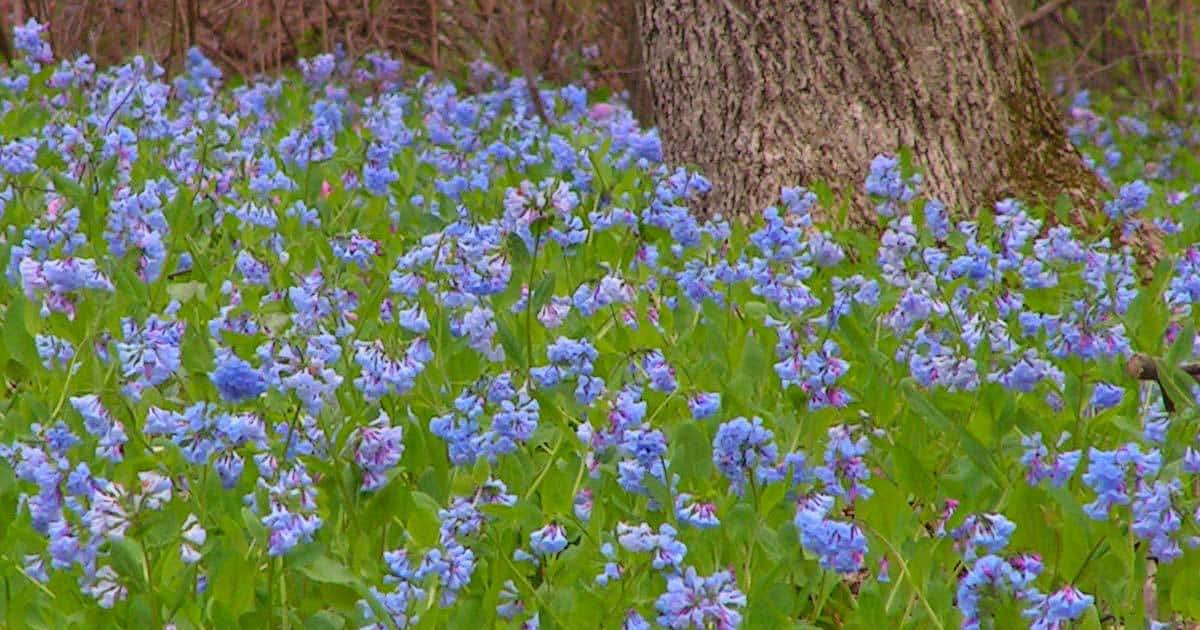 The plant has a height and spread of about 18”.
The plant has a height and spread of about 18”.
The plants’ leaves are oval and bluish/green.
Blooms start as pink buds and unfurl into trumpet-shaped, pendulous blue clusters of blossoms.
Virginia Bluebells are winter hardy in USDA hardiness zones 3 through 8.
Growing Virginia Bluebells
Torenia Fournier (Wishbone Flower)
Torenia fournieri is also known as Wishbone Flower. This native of Asia has a height and spread of about one foot.
Pretty, trumpet-shaped flowers come in shades ranging from pale to deep purple and may also be bi-colored.
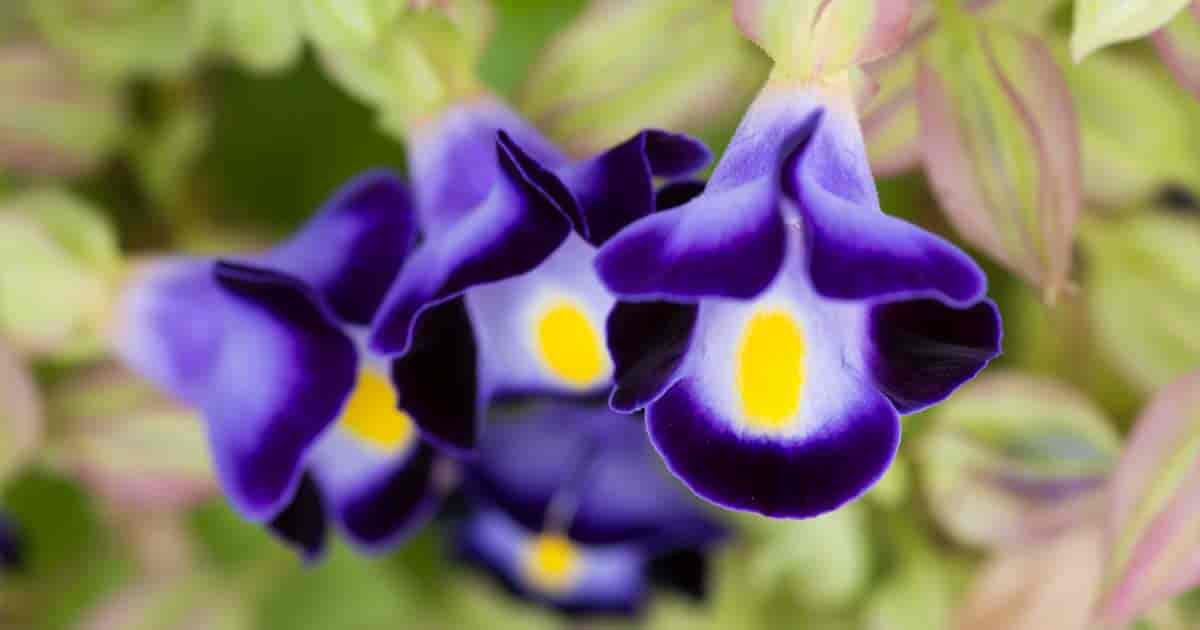 Bloom time is early summer through early winter.
Bloom time is early summer through early winter.
The plant somewhat resembles a petunia, but it is best grown in deep shade.
This hardy annual is successfully grown in USDA hardiness zones 2 through 11.
Details on Growing the Torenia Plant
Sutera cordata (Bacopa)
Sutera cordata is also known as Bacopa. This pretty plant is a great filler for a hanging basket or as a ground cover in a partially shaded garden.
The classic version of the plant has small, rounded, scalloped leaves and produces masses of little white flowers.
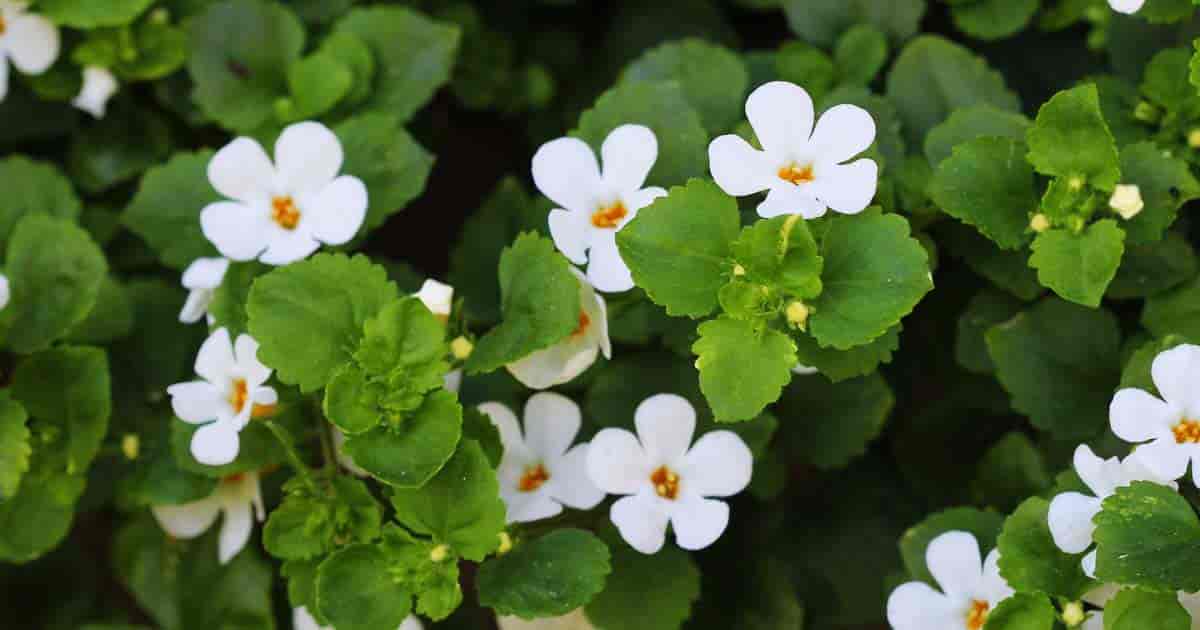 Other cultivars offer bunches of dainty blooms in shades of:
Other cultivars offer bunches of dainty blooms in shades of:
- Coral Red
- Lavender
- White
- Pink
- Blue
Bacopa is winter hardy in USDA hardiness zones 9 through 11.
Details on Bacopa Plant Care
Browallia (Violet or Amethyst Flower)
Browallia is also known as Bush Violet or Amethyst Flower.
The plant is a perennial, which is winter hardy to USDA hardiness zone 8A, but it is often used as an annual in other settings.
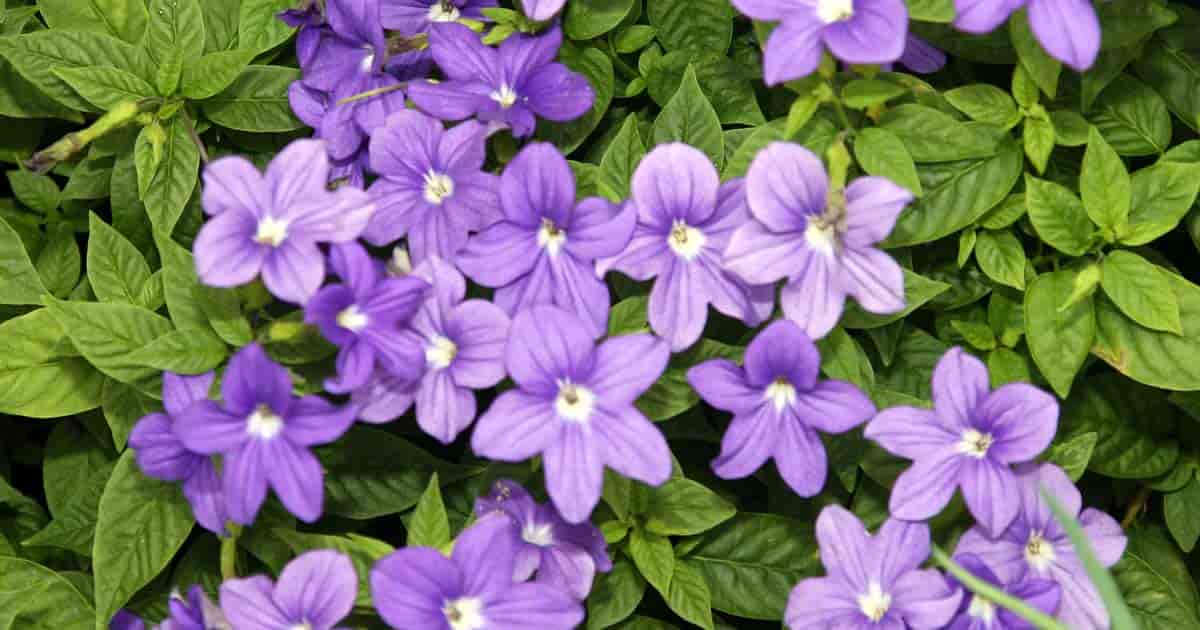 Browallia stands about 18” high and produces pretty five-petaled blooms in shades of violet from mid-summer to early fall.
Browallia stands about 18” high and produces pretty five-petaled blooms in shades of violet from mid-summer to early fall.
Leaves are light to dark green and oval-shaped.
More on Growing the Browallia Flower
Lobelia
Lobelia is a shade-loving herbaceous perennial available in a wide variety of cultivars which are typically winter hardy in USDA zones 4 through 9, with some exceptions tolerating lower temperatures in zone 3.
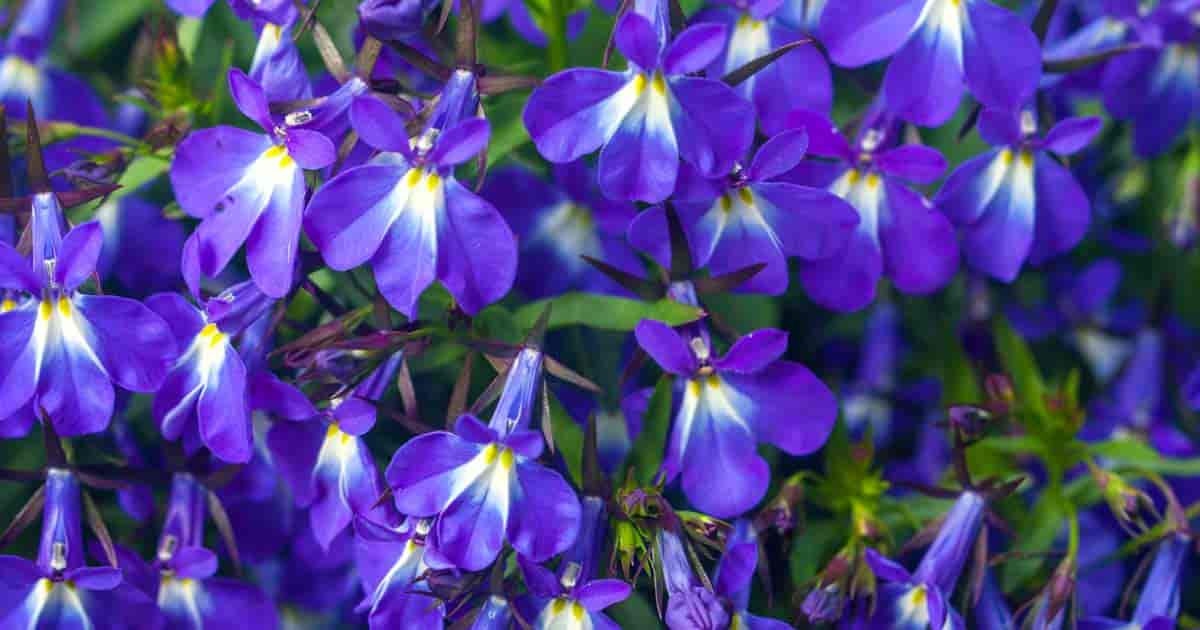 Flower colors, shapes and sizes range from the very small white blooms of Creeping Lobelia, large pink blossoms of Lobelia Cotton Candy and deep purple-blues of Lobelia erinus.
Flower colors, shapes and sizes range from the very small white blooms of Creeping Lobelia, large pink blossoms of Lobelia Cotton Candy and deep purple-blues of Lobelia erinus.
More Details on Care of Lobelia Flowers
Caladium
Caladium is not a flowering plant, but it does produce very large, pretty and colorful leaves in shades ranging from deep green to pink to bronze.
 There are many attractive cultivars to choose from, most of which do very well in deep shade settings.
There are many attractive cultivars to choose from, most of which do very well in deep shade settings.
The plant grows to be about 12” – 15” inches high.
Growing Caladium Bulbs
Carex Testacea (Indian Summer or Prairie Fire Sedge)
Carex testacea Indian Summer is also known as Prairie Fire Sedge.
This ornamental grass is a set-it-and-forget-it perennial plant growing to be about 28” high.
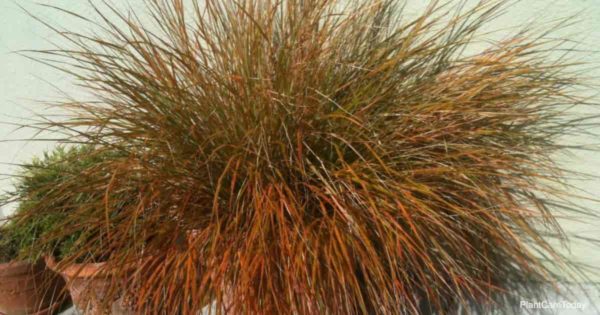 Image: chuck b. [CC BY 2.0], via Wikimedia Commons
Image: chuck b. [CC BY 2.0], via Wikimedia Commons
It displays pretty reddish-brown plumes early in the summer.
When these have died back, the foliage transitions from deep olive green to orange to reddish-brown.
Although this plant can do well in the shade, colors will be more intense with more sun.
The plant is winter hardy in USDA hardiness zones 6 through 9.
More on Growing Carex Testacea
Choose The Right Shade Flower For The Type Of Shade You Have
Carefully evaluate the shade in your yard to determine just how much or how little sunlight the plants you choose will have.
Here’s a rundown on the types of shade you’re likely to find:
- The moist, cool shade is often found on the north side of your house.
This is a good choice for many shade-loving plants such as ferns, but it may not be adequate for flowering plants.
- Partial shade refers to an area receiving four or five hours of sunlight daily. There are quite a few plants which will do very well in partial shade, especially with morning sun. Afternoon sun may be too hot for shade flowers.
- Areas with light shade received 2 to 4 hours of sunlight daily. In very hot areas, all kinds of plants can do well in light shade as they need protection from the punishing sun.
- The filtered shade is found under a canopy of trees. It is also referred to as dappled shade. Quite a few shades loving flowers make good understory in this type of shade setting.
- Full shade can usually be found on the north side of your home or underneath large and thick shade trees. These areas do not receive direct sun at all.
- Dry shade is found in areas completely shaded and don’t get much moisture from rain. Dry shade is usually found under large, thick trees which not only shield the ground below from the sun but also rain.
Prepare The Soil Well
It’s important to understand most shade-loving plants are adapted to growing on the forest floor where the soil is very rich, moist, and naturally amended with fallen leaves or needles.
Before you plant a shade garden, be sure to turn the soil deeply and amend it with organic matter to a deep level.
If planting under a tree, be careful not to damage the tree’s roots as you plant your shade garden.























 Image by Fritzflohrreynolds [CC BY-SA 3.0], via Wikimedia Commons
Image by Fritzflohrreynolds [CC BY-SA 3.0], via Wikimedia Commons













 Image: chuck b. [CC BY 2.0], via Wikimedia Commons
Image: chuck b. [CC BY 2.0], via Wikimedia Commons